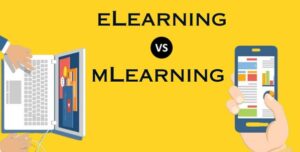Tips on How To Engage With Students
4 min read
Engage With Students
Engaging with students is more than just conveying information; it’s about creating an environment where learning becomes a captivating and enriching experience. As educators, our ability to connect with our students profoundly impacts their academic success and overall enthusiasm for learning. In this blog, we will explore a series of practical tips to enhance your student engagement strategies. From understanding the diverse needs of your audience to fostering effective communication and making learning enjoyable, these insights will help you become a more effective and inspiring educator. So, whether you’re a teacher, professor, or mentor, let’s dive into the art of How to engage with students and unlocking their full potential.
I. Know Your Audience
To effectively engage with students, it’s crucial to first “Know Your Audience.” Understand their backgrounds, interests, and learning styles. Tailor your teaching approach and content to their unique needs, fostering a more inclusive and interactive learning environment that promotes active participation and meaningful engagement in the educational process.
A. Recognize Individual Differences
Every student brings a unique set of experiences, backgrounds, and learning capabilities to the classroom. Recognizing and respecting these differences fosters inclusivity and allows you to tailor your teaching methods to cater to their specific needs. Acknowledging their individuality helps create an environment where all students feel valued and supported.
B. Understand Learning Styles
Students have diverse learning styles, such as visual, auditory, or kinesthetic preferences. Understanding these learning styles enables you to adapt your teaching approaches, incorporating various techniques that resonate with different students. This not only enhances engagement but also ensures that the learning experience is accessible and effective for a wider range of students, promoting a more comprehensive educational atmosphere.
II. Create an Interactive Learning Environment:
A. Encourage Active Participation:
Foster a classroom atmosphere where students feel comfortable sharing their thoughts, asking questions, and participating in discussions. Encourage debates, group activities, and peer-to-peer interactions to promote active engagement and a deeper understanding of the subject matter.
B. Use Multimedia and Real-World Examples:
Incorporate multimedia elements such as videos, images, and interactive simulations to make lessons more engaging. Relate theoretical concepts to real-world examples and current events, showing students the practical applications of what they’re learning. This approach not only sparks interest but also enhances comprehension and retention.
III. Effective Communication:
A. Foster Open Dialogue:
Establish an environment where students feel comfortable expressing their thoughts and concerns openly. Encourage questions and discussions, fostering a sense of inclusivity and trust, which can lead to more meaningful engagement and a deeper understanding of the subject matter.
B. Actively Listen to Students:
Listening attentively to students’ questions, feedback, and ideas is crucial. It demonstrates respect and validates their input, ultimately building a stronger teacher-student relationship. This active listening fosters a more responsive and student-centered approach to teaching, promoting engagement and constructive communication.
IV. Make Learning Enjoyable and Relevant:
A. Incorporate Fun Activities:
Integrate enjoyable learning activities into your curriculum, such as games, quizzes, and interactive projects. These elements add an element of fun to the learning process, making it more engaging and memorable for students.
B. Connect Lessons to Real-Life Scenarios:
Showcase the practical relevance of lessons by linking them to real-life situations and scenarios. When students see how the subject matter applies to their daily lives or future careers, they are more likely to stay engaged and motivated to learn, understanding the broader significance of the knowledge they gain.
V. Adapt and Improve:
A. Tailor Teaching Methods:
Recognize that each student is unique and adapt your teaching methods to cater to diverse learning styles. Be flexible in your approach, offering various resources and strategies to ensure that all students have the opportunity to engage with the material effectively.
B. Continuously Reflect and Adjust:
Regularly reflect on your teaching practices and student feedback. Be open to making adjustments based on what works best for your students. This ongoing improvement process ensures that your teaching methods remain relevant, engaging, and effective, promoting a more productive learning experience.
In conclusion,
In conclusion, future teachers, whether undergoing a formal teacher training course or embarking on a journey of teaching and learning, play a pivotal role in shaping the educational landscape. These tips on engaging with students serve as a compass for educators, guiding them toward creating vibrant and effective learning environments. Recognizing the importance of understanding individual differences and learning styles, fostering open communication, and making learning enjoyable and relevant are essential for future teachers to empower their students. Moreover, the commitment to continuous adaptation and improvement ensures that teachers remain at the forefront of educational innovation. As we prepare the educators of tomorrow, let us remember that their dedication to engaging with students is instrumental in shaping a brighter future for education and society as a whole.






